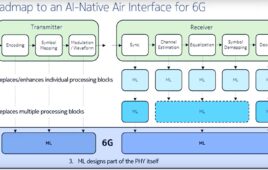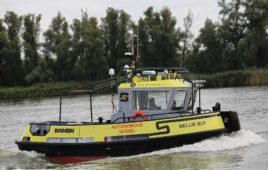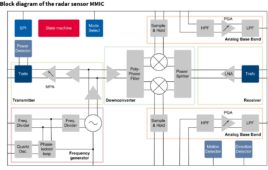All around Alaska and out into the Pacific, little white domes dot the mountainside, coastlines and islands — the only tangible evidence of America’s invisible armor.
The domes are operated 24/7 year-round by a small crew of mostly contracted civilian Airmen.
They drive up precarious, ice-covered slopes, braving 40 mph winds in minus 40-degree temperatures with little to no medical support nearby as part of their daily work.
These are the Pacific Air Forces Regional Support Center long-range radar sites. Their mission is to track aircraft through Alaska’s airspace and along its borders.
The PRSC manages 21 installations across the Pacific, which, due to their locations, cannot be accessed by normal means, said Lt. Col Robert Bartlow, the 611th Civil Engineer Squadron commander.
The only way to get in or out is by plane or by barge.
In addition to constantly scouting the skies, some of the installations also serve as emergency airfields to which Air Force aircraft can divert should they need to make an unscheduled landing. Others, such as Wake Island, also serve as halfway points — gas stations for planes to refill at while on their way to other Pacific locations.
“The missions at each one of those installations is a little bit different,” Bartlow said. “Eareckson Air Station serves as an airfield, but also has a Cobra Dane radar system, which is essentially a space-tracking asset that supports Air Force Space Command and the Missile Defense Agency.”
Much like an air base wing would support its squadrons, the PRSC does the same with its three squadrons and one detachment, Bartlow said.
However, the difference is that the PRSC is a tenant unit, which means that they do not have their own base and infrastructure. For that, the PRSC relies on the 673rd Air Base Wing and 3rd Wing for transportation to and from their sites. It is this support from Joint Base Elmendorf-Richardson units that enables the PRSC to ensure unauthorized aircraft do not come into U.S. airspace.
The long-range radar sites are primarily run by contracted employees, with the maintenance being contracted as well. These contracts are accomplished through a partnership. The 766th Specialized Contracting Squadron handles the larger contracts and the 673rd Contracting Squadron provides construction and commodity contracts.
Because of its unique facilities and mission, the PRSC offers opportunities base Airmen may not normally have, Bartlow said.
Airman 1st Class Joshua Quap, a 673rd CS contracting specialist, became one of those few when he flew up to Indian Mountain to perform a final inspection for a boiler that was recently installed through his contracting squadron.
“It’s definitely a different place, it really is. It was awe-inspiring, to say the least,” Quap said. “It really shows Alaska for what it is.”
The mission partnership also involves members of the 673rd Civil Engineer Group.
“We exchange personnel from time to time to expand their experience,” Bartlow said. “We’ve received support with a couple of their engineering assistants who have been helping us out for several months to augment our folks and go out to these sites.
“It’s great for us because we had more work than we could cover with the people we had,” he said. “It’s also great for them because it’s an opportunity to get out and see something different, and to have an opportunity to provide direct oversight on some very unique projects. It’s a win-win.”
The 673rd Force Support Squadron manages all PRSC manpower; all of their funding goes through the 673rd Comptroller Squadron; and the 673rd Logistics Readiness Group provides vehicle maintenance to PRSC locations. Many different squadrons enable the PRSC mission’s success.
“We’ve got working relationships with all of them and are very pleased with the support they offer,” said Capt. Ben Shearer, a PRSC executive officer. “Our mission would absolutely not be possible without their support. They enable us every single day to do our jobs.”




